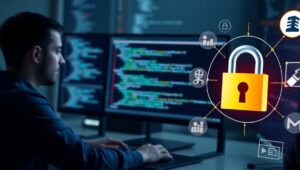Secure Coding Practices for the Modern Developer (2025 Essentials)
In today’s rapidly evolving digital landscape, security is paramount. As developers, we are the first line of defense against vulnerabilities that can compromise sensitive data and disrupt critical systems. This article outlines essential secure coding practices that every modern developer should adopt in 2025.
Why Secure Coding Matters
The cost of security breaches is staggering, both financially and reputationally. Neglecting secure coding practices can lead to:
- Data breaches and loss of customer trust
- Legal and regulatory penalties
- System downtime and disruption of services
- Financial losses due to remediation efforts
By prioritizing security from the outset, we can mitigate these risks and build more resilient applications.
Essential Secure Coding Practices
1. Input Validation and Sanitization
Always validate and sanitize user inputs to prevent injection attacks. This includes:
- Data Type Validation: Ensure inputs match the expected data type (e.g., integer, string).
- Format Validation: Verify inputs conform to a specific format (e.g., email address, phone number).
- Whitelisting: Allow only known-good inputs and reject everything else.
- Encoding: Properly encode data before displaying it to prevent cross-site scripting (XSS) attacks.
2. Authentication and Authorization
Implement robust authentication and authorization mechanisms to control access to resources. This includes:
- Strong Passwords: Enforce strong password policies (e.g., minimum length, complexity requirements).
- Multi-Factor Authentication (MFA): Require users to provide multiple forms of authentication.
- Principle of Least Privilege: Grant users only the minimum necessary permissions.
- Session Management: Securely manage user sessions to prevent session hijacking.
3. Error Handling and Logging
Handle errors gracefully and log relevant information for debugging and auditing. This includes:
- Exception Handling: Catch and handle exceptions properly to prevent sensitive information from being exposed.
- Logging: Log important events, such as login attempts, failed authentication attempts, and security-related errors.
- Secure Logging: Ensure logs are stored securely and protected from unauthorized access.
4. Data Protection
Protect sensitive data both in transit and at rest. This includes:
- Encryption: Encrypt sensitive data using strong encryption algorithms.
- Data Masking: Mask sensitive data when it is not needed for processing.
- Tokenization: Replace sensitive data with non-sensitive tokens.
- Secure Storage: Store sensitive data in secure locations with appropriate access controls.
5. Secure Configuration Management
Securely manage application configurations to prevent unauthorized modifications. This includes:
- Configuration Files: Store configuration files securely and protect them from unauthorized access.
- Secrets Management: Use a secrets management system to store and manage sensitive credentials.
- Environment Variables: Use environment variables to configure applications in different environments.
6. Regular Security Audits and Testing
Conduct regular security audits and testing to identify and address vulnerabilities. This includes:
- Code Reviews: Conduct thorough code reviews to identify potential security flaws.
- Static Analysis: Use static analysis tools to automatically detect vulnerabilities in code.
- Penetration Testing: Hire ethical hackers to simulate real-world attacks and identify weaknesses in your systems.
- Vulnerability Scanning: Regularly scan your systems for known vulnerabilities.
7. Stay Updated with the Latest Security Threats
Keep abreast of the latest security threats and vulnerabilities. This includes:
- Security Newsletters: Subscribe to security newsletters and blogs to stay informed about emerging threats.
- Security Conferences: Attend security conferences and workshops to learn from industry experts.
- Vendor Security Advisories: Monitor vendor security advisories for updates and patches.
Conclusion
Secure coding is an ongoing process that requires constant vigilance and adaptation. By adopting these essential practices, modern developers can build more secure and resilient applications that protect sensitive data and mitigate the risk of security breaches. In 2025, security is not just a feature – it’s a fundamental requirement.




